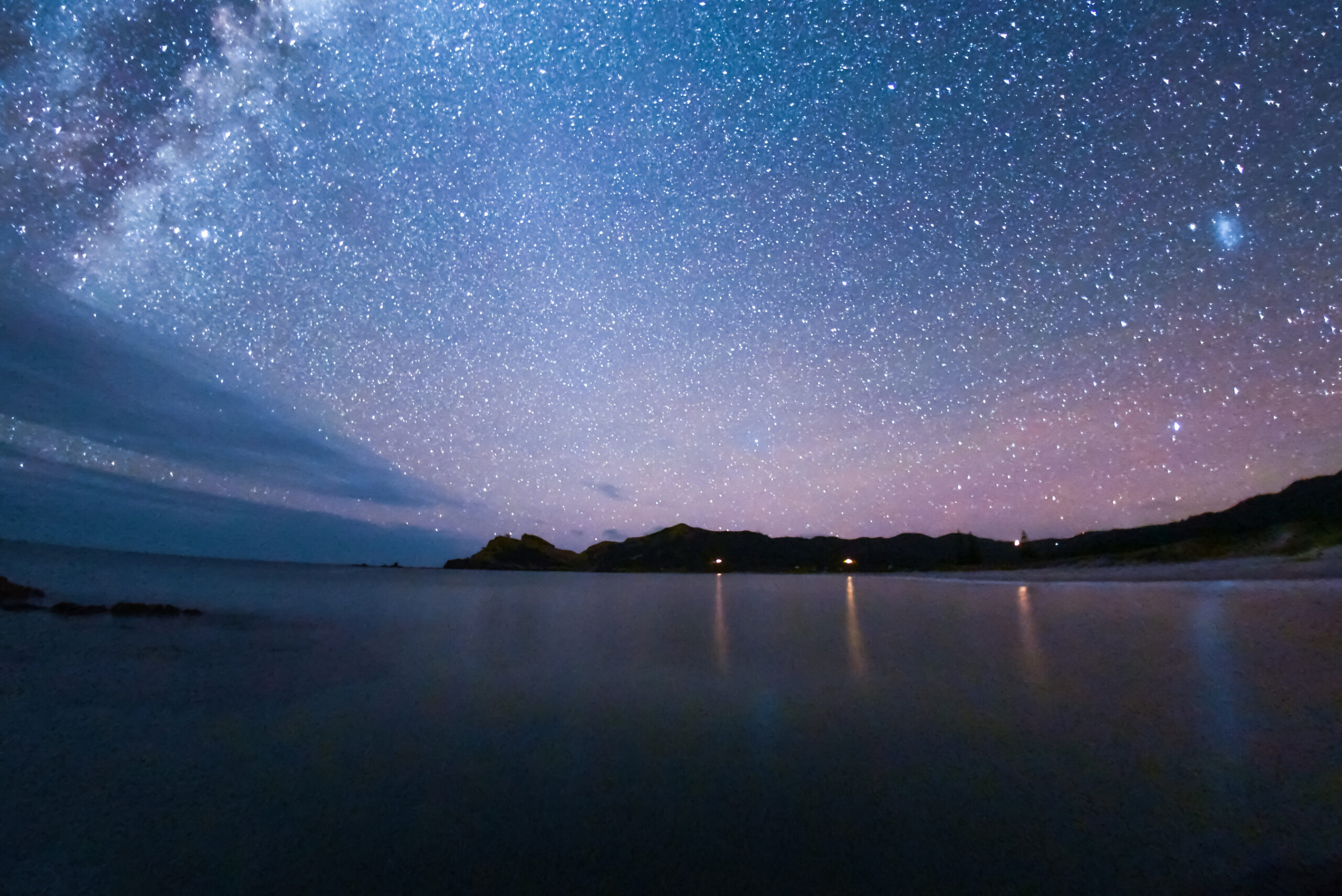As we step into the new year, skygazers are in for a treat with a series of captivating astronomical events set to unfold in 2024. While some events will be visible only from specific locations on Earth, the majority will be observable to all inhabitants of the planet. Astronomy enthusiasts can look forward to a diverse range of celestial occurrences, including a total solar eclipse and impressive meteor showers. National Geographic has compiled a schedule of events, complete with times and locations.
Main Astronomical Events in 2024:
January 18: Jupiter and the Moon Dance Together
The first of the series of astronomical events of 2024 is a captivating conjunction of two bright celestial neighbors: the Moon and Jupiter. The largest planet in the Solar System will dominate the evening sky on January 18, appearing next to the shining crescent moon.
For those who might miss this January rendezvous, fret not—Jupiter and the Moon will meet again in the night sky on February 14, March 13, and April 10 in a series of conjunctions following the lunar cycles around Earth. Each pairing will be unique, with the moon presenting different phases and orientations alongside the giant Jupiter. Grab your binoculars to observe Jupiter’s own retinue of four large moons arranged nearby.
April 8: Total Solar Eclipse Crosses North America
The second of the series of astronomical events of 2024 is the total solar eclipse that will darken the sky for millions of observers across North America as the moon completely covers the sun. The path of totality, where the entire sun disk will be obscured by the moon, will traverse four states in Mexico, 15 U.S. states from Texas to Maine, and five Canadian provinces in the eastern part of the country.

April: Bright Comet Passes Close to Earth
A colossal comet, named 12P/Pons-Brooks, three times larger than Mount Everest, is swiftly making its way toward the inner part of the Solar System. This cryovolcanic comet, primarily composed of ice, dust, and gas, exhibited several outbursts in 2023, surprising astronomers with its rapid increase in brightness. By March, as the comet approaches the Sun, it is expected to accelerate further due to the increased gravitational pull of our star.
By April, it may even be visible to the naked eye just after sunset in the western sky. Look for it on April 12, as the comet passes near the bright Jupiter, making it easier to track. Nine days later, on April 21, Comet Pons-Brooks will reach its closest point to the Sun and may reach its peak brightness, providing one of the best opportunities to see it. Also, be sure to search for the comet during the total solar eclipse on April 8, when it will appear near the eclipsed sun—potentially visible with binoculars or even the naked eye if it flares up—a rare celestial duo promising an unforgettable cosmic show!
May 4: Peak of the Eta Aquarid Meteor Shower
In 2024, conditions promise to be ideal for a meteor shower spectacle. The best views are expected in the pre-dawn hours of May 4 when the waning crescent moon won’t rise until well into dawn, ensuring an exceptionally dark sky for stargazers to witness even the faintest falling stars.
The radiant of the shower, where individual meteors seem to originate, will be situated near the southeast horizon within the boundaries of the Aquarius constellation. Thanks to this celestial positioning, the meteor shower display will be somewhat favorable for observers in the southern hemisphere.
August 12 and 13: Perseid Meteor Shower Peak
This year holds the promise of an exceptional display for the Perseids as the peak of the meteor shower coincides with a dark moonless sky. The waxing moon will set around midnight, providing excellent conditions for evening and pre-dawn viewing. The northern hemisphere is favored for this shower, as the meteors will pass near the Perseus constellation, lying close to the horizon for those residing in far southern latitudes.
September and October: Arrival of Comet C/2023 A3 (Tsuchinshan-ATLAS)
The celestial body A3 Tsuchinshan-ATLAS was first detected in February 2023, and it promises to offer a stunning spectacle at the end of 2024. In early summer, it will be visible in the evening sky, and amateur astronomers should be able to observe it through telescopes.
As September approaches, the comet’s orbit will bring it closer to both the Sun and Earth for the first time in 80,000 years. Astronomers anticipate it may become brighter and potentially visible with binoculars or even the naked eye, appearing low in the eastern sky before sunrise in southern latitudes.
If the comet survives its journey around the Sun, the best viewing time for observers in the northern hemisphere will begin around October 12. It will rise higher in the night sky each night, gradually becoming more visible.
September 17: Saturn Joins the Moon
The last four months of the year offer an elegant sequence of celestial pairings as the Moon and Saturn draw closer once a month, starting on September 17. This striking sight, visible to the naked eye, will repeat on October 14 and 15, November 11, and December 8.
The two bright objects will be visible shortly after sunset, and the gap between them will be perfect for binoculars with slight magnification. Both objects can be easily observed together, although they won’t be close enough for a telescope. The color contrast will also make the pair visually stunning, with the silvery moonlight next to the distinct yellow hue of the giant planet.
October 2: Ring of Fire in the Sky
Lucky observers in the Western hemisphere will witness the second solar eclipse of 2024. The path of the annular eclipse, or the ring of fire, will mostly cross the Pacific Ocean, limiting visibility from land to a few locations.
The first observation from land will occur on the picturesque Easter Island at 14:07 local time (19:07 UTC). Residents there will witness an impressive 6 minutes and 23 seconds of annularity—the maximum part of the eclipse when the Moon is in front of the solar disk, leaving a ring of sunlight around its edge. This phenomenon occurs when the Moon is farther from Earth than during a total solar eclipse, making it appear smaller in the sky.
The eclipse will then sweep across the southern part of Chile and quickly move over the Andes Mountains into Argentina. Meanwhile, a partial solar eclipse will be visible to millions of observers in most of the southern part of South America.
December 4: Venus and the Moon Conjunction After Sunset
A gift for early holiday celebrations awaits stargazers as the two brightest objects after the Sun, the Moon, and Venus, join forces in the early evening sky. These two worlds will be close enough to be observed together in binoculars, and in addition, Venus will appear as a miniature version of a crescent moon in amateur telescopes. All you need to do to enjoy this celestial alignment is to look for the moon just after sunset on December 4.
While some astronomical events will be visible only from specific locations on Earth, the majority will be observable to all inhabitants of the planet.










